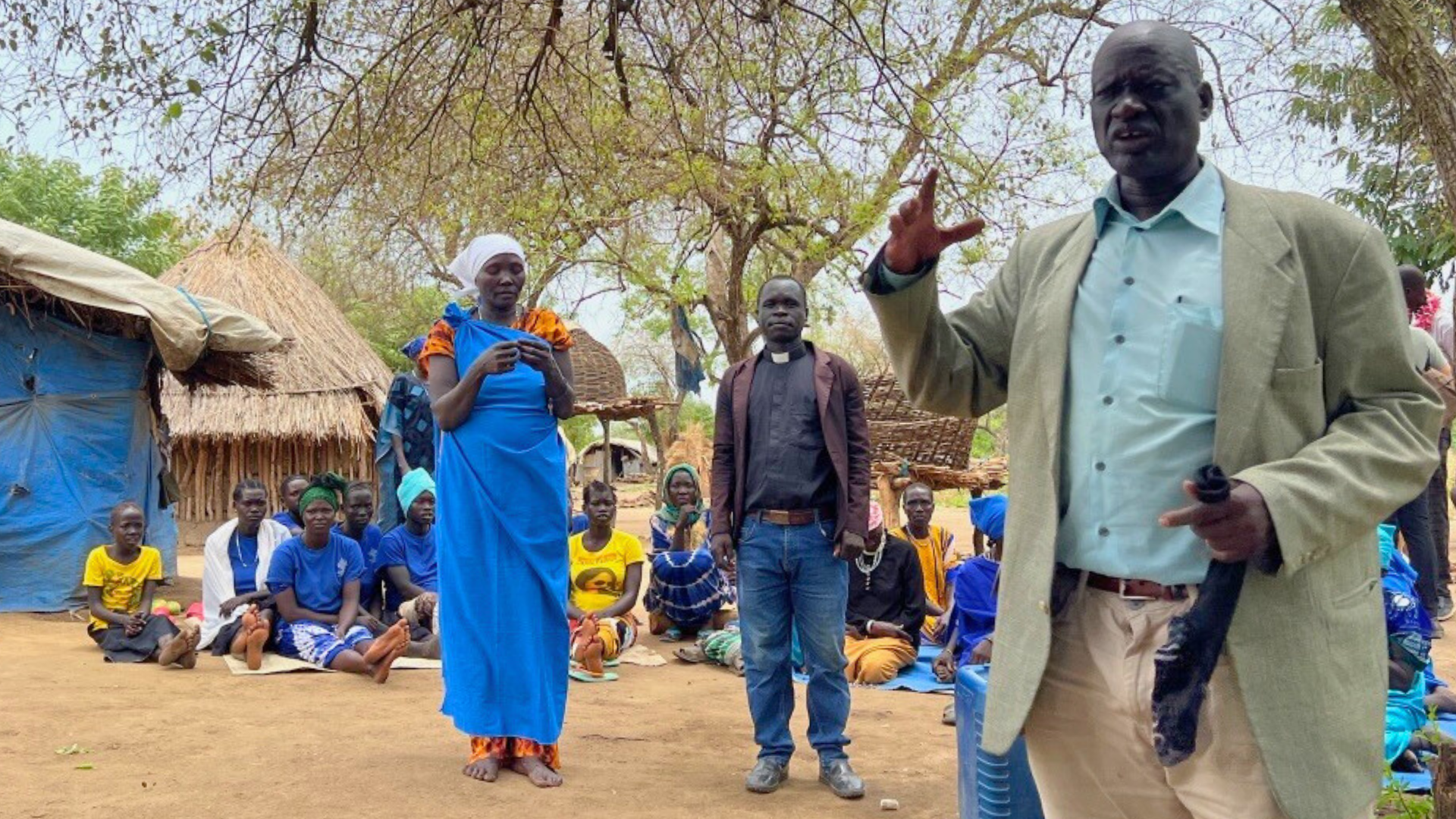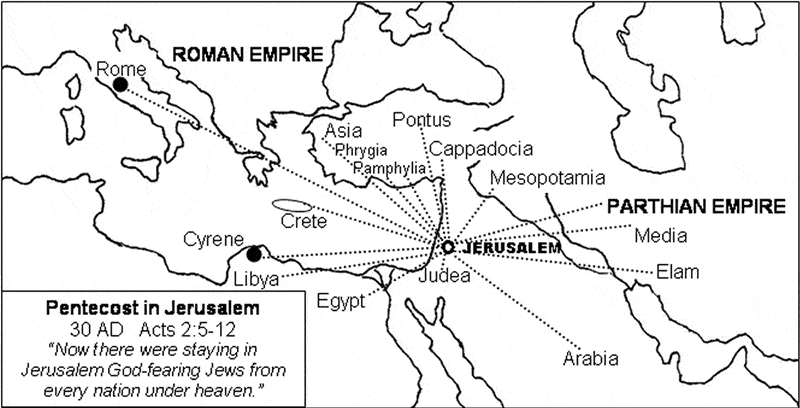Praise. Prayer. Teaching. Giving. Why what we do when we gather is more than the sum of its parts.
By Todd E. Johnson
On the first day of my basic worship course, I go over the learning outcomes I have established for the students. When we come to the outcome, “To develop an operative definition of worship,” I pause and tell them that this will be the most difficult task they will have in this class. Then I ask students if they have ever been taught what worship is, or given a biblical or theological definition of worship. The vast majority of them have not, yet many of them have been planning and leading worship in churches, sometimes for years. Then I ask, “If you have not been given a template or guide to work from, how do you know what you are doing is Christian worship?”
One of the great challenges facing many churches today is a lack of a clear understanding of what worship is. Many people have defined worship operationally. That is, they learn what worship is by attending a service in their church and use that as a standard by which to evaluate other services. Further, we use the term “worship” in a number of ways today. There is a genre of worship music known as “praise and worship” music. Are praise and worship distinct concepts, or two similar and related concepts? Isn’t all worship praise? And when we say “praise” do we mean the specific form of praise as exemplified by praise and worship music? Churches often describe their musical ensembles interchangeably as “praise bands” or “worship bands,” making distinctions between these terms difficult to identify.
Some churches describe their services as having two parts, the first being “worship” and the second being “teaching.” The worship half of the service is almost exclusively music, frequently interspersed with prayers. Similarly many Christians discuss worship in terms of a “worship experience,” and at times will speak of “my
worship moment” (or worship time). The use of the term “worship” speaks to rituals that are evocative, maybe predominantly musical, and are received by or primarily benefit the individual worshiper.
These understandings of worship are relatively recent in the history of the church—they do not go back much more than a century or so. Christian practices such as worship, and the piety that accompanies them, have always been in transition. Growing up in the 1960s, I remember a picture that seemed to be in the homes of many of the members of our Covenant church. It was a photograph taken by Swedish immigrant Eric Enstrom of a man praying over a simple meal. Entitled Grace, it became so popular that in 2002 it was established as the state photograph of Minnesota. It represents a piety of quiet reverence and simple faith.
In his recent study of churches and their worship, sociologist Gerardo Marti has identified the ideal worshiper in the minds of many contemporary Christians as a man with no inhibitions restricting his praise. Here the picture comes to mind of a person standing, eyes and hands cast upward, with unapologetic expressions of emotion.
Those are two very different pictures of piety, and worship based on these models will look, sound, and feel very different. The point here is not to favor or criticize any one particular style or genre of worship. It is to identify the lack of clarity and uniform agreement about the word “worship.” What follows then is a brief review of some of the vocabulary that informs our understanding of worship.

“Worship” in an International Perspective
The term “worship” comes from the Old English word weorthscipe, or worth-ship. It means to give someone the honor or respect they are due. In years gone by, English noblemen would be referred to as “your Worship,” identifying them as holding a station of honor or respect. At the same time, in traditional English wedding vows the couple would pledge to each other, “with my body I thee worship,” pledging their full commitment to honoring this person as their spouse. This is the term the English-speaking world chose as the primary word for our gatherings in Christ’s name.
The German word, Gottesdienst, is very different. Although not easily translated, it means roughly “God act” or “God service.” It can mean either God’s service or act toward us, or our service or acts toward God—or both. This word describes a relationship between God and people and mutual service. Theologically, it has been interpreted as first God’s act toward us followed by our response of thanks and praise—though some of our German friends would say it is exclusively God’s act upon us, lest anyone think that worship is an exercise in works righteousness. Most interpret this term as a reciprocating relationship initiated by God’s saving work in Christ on our behalf.
The Korean word is different still. Yebae means to honor or venerate, not unlike “worth-ship,” but does so by referring to a bodily posture, that is to bow. To yebae is to submit, to surrender, to prostrate one’s self. It is what villains require of those they have captured—submission; but in this case it is done willingly because of the difference in status and station between the honored and honoring.
So in three different languages we have three different interpretations or emphases about what worship is. So how do we know which one is correct? What is the standard by which we judge our words and actions?
As Covenanters, we have said since our inception that the Bible is our measuring stick, or “canon”; it is “the only perfect rule for faith, doctrine, and conduct.” This complicates things in two ways. First there is a great deal of very explicit instruction about worship in the Bible. This is especially true of the Old Testament. Leviticus (named for the tribe that provides the priests) is Exhibit A: an entire book primarily focused upon the ritual practices and prayers of the people. But the relationship between Jewish worship and Christian worship is a complicated one and fraught with controversy.
The New Testament, on the other hand, has little explicit instruction about worship by comparison. If the New Testament more clearly articulated a definition of worship, we would probably find more agreement among churches today. Even without that clarity, the New Testament is more directly foundational to the practices of the Christian church, both in the early centuries and today, than the Old Testament. So it is to the New Testament that we turn for further understanding of worship today.
 Worship in the New Covenant
Worship in the New Covenant
The word “testament” refers to a pact or covenant, in our case a covenant with God. Defining the Bible as having two sections, one of the old covenant and one of the new, implies a change or distinction between the two. And that distinction is Jesus of Nazareth who we believe to be the human child of the Virgin Mary and the eternal Son of God, the second person of the Trinity. Therefore, when we describe worship, we are describing Christian worship—the worship of the Triune God primarily revealed in the dying and rising of Christ.
Our worship is eschatological, that is we believe that our worship now on earth is an incomplete reflection of what we will one day do in the presence of God in heaven. Someday all people, whether they acknowledge it in their lifetime or not, will realize that Jesus is the Christ and the only one worthy of worship, and every knee shall bow and every tongue confess that Jesus Christ is Lord (Philippians 2:10; Romans 14:11). All of the terms referred to here should be read with this understanding in mind.
Three terms are used in the Greek of the New Testament that I believe will be helpful in the pursuit of an understanding of worship. The first is proskuneo—one of the most frequent words used for worship in the New Testament.
In Matthew the leader of the synagogue comes to Jesus and worships (proskuneo) him, asking Jesus to heal his daughter (9:18). The translation may strike you as odd here, as the word is often translated as bow or kneel. But that is what proskuneo means, to pay homage to by bowing or kneeling; upon occasion it can even mean to kiss, but a kiss understood as a sign of respect not intimacy. Proskuneo is what the Magi from the East did when they encountered the Christ child; they fell to the ground and worshiped him (Matthew 2:11). Like yebae, proskuneo is a bodily action embodying a distinction in status or worth. Whereas our term “worship” speaks of an attitude, proskuneo speaks to an attitude embodied. It is a physical action, or as the late Robert Webber would say, “Worship is a verb.”
Another term in the New Testament translated as “worship” is latreuo, which means to serve. This service can take the form of ritual action such as those who worship (latreuo) in the Spirit and glory in Christ Jesus (Philippians 3:3). It can also be what you do in your everyday life, such as Paul’s worship (often translated “service”) of God in his proclamation of the gospel in word and deed (Romans 1:9). As reflected in the German term Gottesdienst, latreuo speaks of our service to God in response to God’s gracious offer of salvation. And this service is both when we gather as a community and when we serve God in our everyday lives.
The last term, like the previous two, is a Greek word that the Christian church adopted to describe its practices of gathering together in Christ’s name. Leitourgia is a compound word arising from the term for people (laos) and work (ergia). Leitourgia is a reversible term like Gottesdienst. It can mean the work of the people or the work for the people—or both. A leitourgia in the ancient world was a service performed by one person or group of people on behalf of the larger community. If a wealthy person paid to have a new well dug for the entire community to use, it was a leitourgia, a work done by one person for the many. This term is used to describe Christ’s intercessory work before the Father on our behalf, like the high priest in the Holy of Holies (Hebrews 8:6; 9:21).
Leitourgia is the broadest term, as it speaks simultaneously to worship being inward and outward, as well as vertically oriented toward God and horizontally oriented toward people, both believers and non-believers. It’s ironic that leitourgia has become such a narrow term, as it is the root of the word “liturgy” which we often limit to the execution of a ritual, often a formal ritual. Leitourgia does prioritize our service to God as being first our gathering in worship and then subsequently radiating out from there in acts of service in the world. It has echoes of the admonition in Hebrews, “And let us consider how to provoke one another to love and good deeds, not neglecting to meet together, as is the habit of some, but encouraging one another, and all the more as you see the Day approaching” (10:24-25).
Giving Voice to Vocabulary
How do we pull together a cohesive understanding of worship from the New Testament terms we have examined?
We have discovered that our modern terms often pick up one or two of the New Testament themes associated with worship, but tend not to integrate them holistically. Some of the most comprehensive teaching about worship in the New Testament appears in Paul’s instructions about worship in 1 Corinthians.
At the conclusion of chapter 14, Paul makes three significant points that help us define what worship should be. First, it is a gathering of God’s people in which each person is expected to bring something to contribute to the community. And each contribution (whether a hymn, a teaching, a prophetic word, a word in tongues) is to be offered to the building up of the body as well as to honor God. This implies that worship leadership is primarily the coordination and orchestration of the gifts and offerings of the people. Paul assumes that worship is not only corporate, but that it is essentially so. If one should come and not contribute his or her gift, or not attend at all, the building up of the community will be deficient.
Second, there is interdependence in the gifts that people offer, resulting in the whole of the service of worship. In fact, if some gifts are absent, others may not use their gifts. In particular, Paul instructs that if someone speaks in a tongue, they should only contribute it to the gathering if there is someone there to interpret, for everything is done for the glory of God and the building up of the community. If there is no one to interpret, those with a tongue to speak should speak it to God in silence, for an uninterpreted utterance will not build up the body.
Third, the service is empowered by the Spirit but is not spontaneous. Twice Paul states that worship should reflect the nature of God—that being orderly, as God is a God of peace and decency, not disorder (vv. 33, 40). To this end Paul actually prescribes a sequence with which the contributions of this gathering should take place: tongues, interpretations, prophecy, revelations—all offered for the building up of the community to the glory of God, decently and in order.
I am not advocating that we follow these instructions slavishly or literally. I would have problems applying this teaching to communities that have neither tongues nor prophecies. I would further have difficulty literally applying Paul’s principle of “decently and in order” to women who are expected by Paul to be silent in these gatherings. I do believe, though, that the three principles above—that Christian worship is a corporate, interdependent gathering empowered by the Spirit in an orderly way—can help us in our worship planning, leading, and participation today.
Some Last Words
I would summarize my application of these principles this way: when people plan worship they should do so with the question, “What sequence of actions do I want to lead the people through for the worship of God and the building up of the community?” These are not such actions as sing or clap, but instead such actions as praise, confess, adore, give thanks. And each of these actions should be in a logical sequence.
Those leading worship services need to ask how they can resource the people so that they are able to do those actions of worship successfully, that God might be glorified and the community strengthened. And those who go to worship should go with the expectation that they will be the primary actors in the worship service. They are going to contribute their gifts to the worship of the entire community; without their contribution, their community’s offering will be less than it otherwise could be.
Worship of God does not end in our gathering, but radiates out into the world as we continue our service to God and neighbor, empowered by the Spirit to proclaim the good news of our risen Lord in word and deed to the world. So a very cursory reading of the New Testament instructions on worship shows that our typical depictions of worship, whether reverent and introverted or ecstatic and extroverted, frame worship in too small a way.
Our worship ought to begin with the recognition of our unworthiness of the offer of salvation in Christ, bringing us to our knees, humbled by the love and holiness of God. It drives us to gather as the body of Christ into which we were baptized and in which we serve with and for one another. Worship leaders orchestrate the gifts of the community enabling the people to worship God in concert. Likewise, we continue our service to God in our lives in the world, anticipating that day we gather for the service of God, perfectly and eternally (Revelation 22:3).
Until then, we work on our vocabulary, in understanding and in practice.
About the Author
Todd E. Johnson is an ordained Covenant pastor and the Brehm chair of worship, theology, and the arts at Fuller Theological Seminary. This article is part of a larger research project trying to identify universal principles of Christian worship that apply across traditions, cultures, and styles. Todd honestly believes that the Chicago Cubs will win the World Series in his lifetime.














